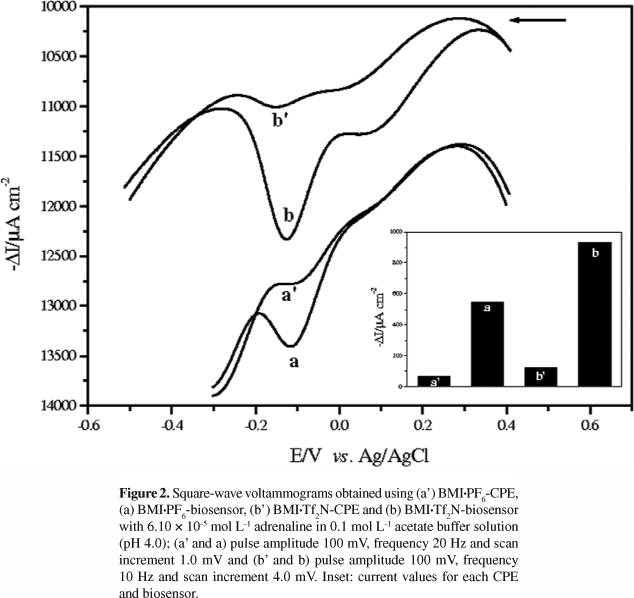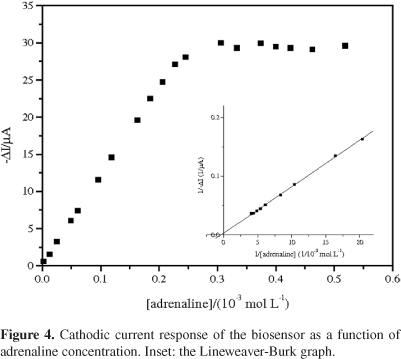Biosensors based on laccase from Aspergillus oryzae and ionic liquids derived from the 1-butyl-3-methylimidazolium cation (BMI) associated with the anions hexafluorophosphate (BMI·PF6) or bis(trifluoromethylsulfonyl)imide (BMI·Tf2N) were constructed for adrenaline determination. The biosensor based on BMI·Tf2N was selected by presenting higher response when compared with that based on BMI·PF6. The best conditions for the optimization were established by square wave voltammetry (pulse amplitude 100 mV, frequency 10 Hz and scan increment 4.0 mV). The best performance was obtained with 50:20:15:15% (m/m/m/m) as the graphite powder:laccase:Nujol:ILs composition in 0.1 mol L-1 acetate buffer solution (pH 4.0). The analytical curve was linear in the concentration range 2.49 × 10-6 to 2.27 × 10-4 mol L-1 with a detection limit of 5.34 × 10-7 mol L-1. The recovery of adrenaline in injectable samples ranged from 96.3 to 101.6%. The results obtained for the adrenaline using the proposed biosensor and the United States Pharmacopeia procedure were in agreement at the 95% confidence level.
biosensor; laccase; ionic liquids; imidazolium; bis(trifluoromethylsulfonyl)imide; adrenaline








